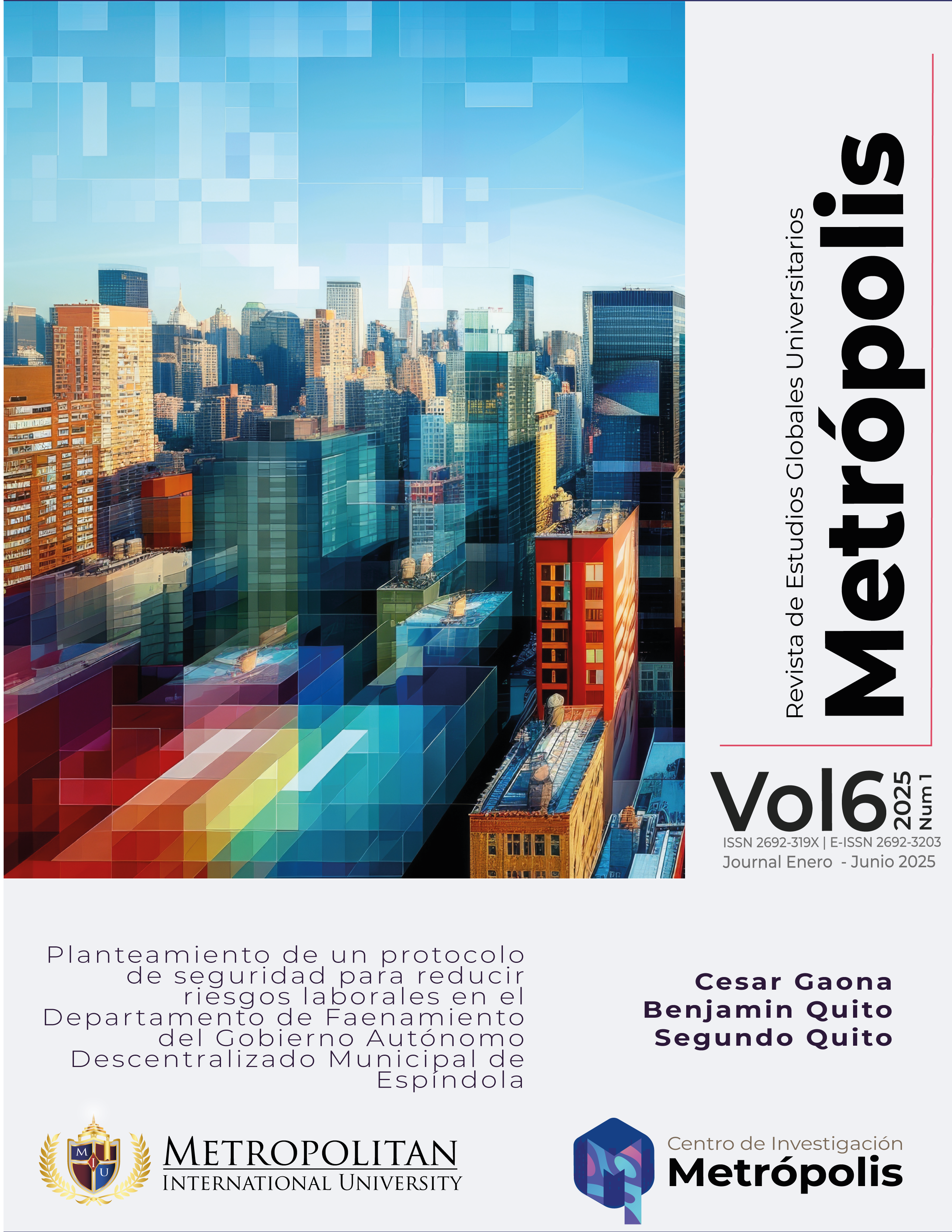Planteamiento de un protocolo de seguridad para reducir riesgos laborales en el Departamento de Faenamiento del Gobierno Autónomo Descentralizado Municipal de Espíndola
Palabras clave:
Seguridad, Riesgos, Protocolo, Faenamiento, CapacitaciónResumen
El Departamento de Faenamiento es un área crítica en las industrias donde los trabajadores enfrentan altos riesgos que afectan su salud física y mental, así como los beneficios de la institución y su normal funcionamiento. En Ecuador, el Código del Trabajo y el Reglamento de Seguridad y Salud en el Trabajo obligan a las instituciones públicas y privadas a evaluar y gestionar riesgos laborales. Sin embargo, en el Departamento de Faenamiento del Gobierno Autónomo Descentralizado de Espíndola, persiste una carencia de conocimiento sobre los riesgos específicos a los que están expuestos los empleados.La literatura señala que las lesiones más comunes en este sector incluyen diversos traumatismos por aplastamiento, cortes y exposición a sustancias peligrosas. Para abordar esta problemática, se propuso la elaboración de un protocolo de seguridad adaptado al contexto de departamento que incluye capacitación continua del personal y la adopción de lineamientos básicos del estándar ISO 45001, un marco que fomenta la gestión sistemática de la seguridad ocupacional. Este enfoque se basó en la aplicación del método lógico-deductivo y una revisión bibliográfica en bases como WOS, SCOPUS y Google Académico, que respaldan la efectividad de tales medidas para mitigar riesgos. La gestión de riesgos laborales en este contexto exige un proceso continuo, participativo y adaptativo, asegurando que las estrategias aplicadas evolucionen con los desafíos del entorno en que se aplican. Este trabajo busca reducir significativamente los accidentes y enfermedades ocupacionales en el sector de faenamiento, promoviendo entornos laborales más seguros y sostenibles mediante la implementación de prácticas preventivas.

##submission.downloads##
Publicado
Cómo citar
Número
Sección
Licencia

Esta obra está bajo una licencia internacional Creative Commons Atribución-NoComercial-CompartirIgual 4.0.





